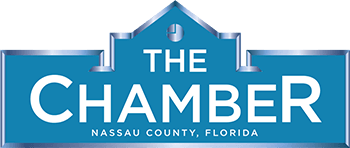IRS Accelerates Work on Employee Retention Credit Claims
WASHINGTON – The Internal Revenue Service announced today continued progress on Employee Retention Credit claims, with processing underway on about 400,000 claims, representing about $10 billion of eligible claims.
Work on the claims for small businesses and others is ongoing as the agency continues to navigate a large volume of claims from the complex pandemic-era credit. A significant number of the Employee Retention Credit (ERC) claims came in during a period of aggressive marketing by promoters, leading to a large percentage of improper, ineligible claims.
“The IRS understands the vital importance of Employee Retention Credits payments for struggling small businesses, and we are continuing to make important progress on one of the most complex tax administration provisions we’ve ever had,” said IRS Commissioner Danny Werfel. “The IRS is working diligently to process ERC claims as quickly as possible, while guarding against improper payments driven by unscrupulous marketers. In recent weeks, the IRS has made substantial progress in separating eligible claims from the wave of ineligible claims that have come in, and we continue working to refine our models to identify more eligible claims.”
The approximately 400,000 claims being processed include eligible and ineligible claims, with the vast majority in this tranche being processed for approval. The total value of eligible claims represents about $10 billion. Checks are being mailed for eligible claims with refunds, with more planned in the weeks and months ahead.
New consolidated claim process for third-party payers helps with claims
To help speed processing, the IRS announced last month the opening of a consolidated claim process to help third-party payers and their clients resolve incorrect claims for the Employee Retention Credit.
Third-party payers report and pay clients’ federal employment taxes under the third-party payer’s Employer Identification Number. They handle clients’ payroll and tax reporting duties. Some of these TPPs filed ERC claims for multiple employers. If a third-party payer’s client has since determined it is ineligible for the ERC and wants to resolve their claim, it is the third-party payer that needs to correct it.
This consolidated claim process lets a third-party payer that filed a prior claim with multiple clients “withdraw” only some clients’ claims while maintaining the claims of the qualifying clients.
The ERC program began as an effort to help businesses during the pandemic, but as time went on the program increasingly became the target of aggressive marketing – and potentially predatory in some cases – well after the pandemic ended. Some promoter groups called the credit by another name, such as a grant, business stimulus payment, government relief or other names besides ERC or the Employee Retention Tax Credit (ERTC).
In addition to processing valid claims, the IRS is continuing to work denials of improper ERC claims, intensifying audits and pursuing civil and criminal investigations of potential fraud and abuse. The findings of the IRS review, announced in June, confirmed concerns raised by tax professionals and others that there was an extremely high rate of improper ERC claims in the current inventory of ERC claims.
Voluntary Disclosure Program remains open through Nov. 22; Withdrawal Program also available
The IRS reminds businesses that have received Employee Retention Credit payments to recheck eligibility requirements and consider the second Employee Retention Credit (ERC) Voluntary Disclosure Program (VDP) to resolve incorrect claims without penalties or interest.
The second ERC-Voluntary Disclosure Program will run through Nov. 22, 2024, and allow businesses to correct improper payments at a 15% discount and avoid future audits, penalties and interest.
The reopening of ERC Voluntary Disclosure Program is designed to help businesses with questionable claims to self-correct and repay the credits they received after filing ERC claims in error. Many of these claims were driven by aggressive marketing from unscrupulous promoters.
As the IRS continues intensifying compliance work involving improper ERC claims, the VDP can protect businesses from potential costly compliance action in the future, such as audits, full repayment, penalties and interest. Full details are available in IRS Announcement 2024-30.
The IRS’s claim withdrawal program remains open for businesses whose ERC claims haven’t been paid yet.
To help businesses caught in this situation, the IRS urges businesses to review important warning signs and eligibility requirements, and to talk to a trusted tax professional. The IRS’s ERC Eligibility Checklist can also help businesses understand eligibility requirements and suggest next steps.
